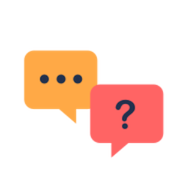
Quick Links
Resources
About MyLeukemiaTeam
Powered By





Chronic myeloid leukemia (CML) — also known as chronic myelogenous leukemia — can be treated in different ways. Two common cancer treatments are tyrosine kinase inhibitors (TKIs) and chemotherapy. While both target leukemia cells, they work in different ways and have different effects on the body.
Your doctor should discuss with you which CML treatment option is better suited to your specific case of CML. Factors that play into this decision include your age, overall health, CML phase, and any mutations (changes) in the cancer cells.
Tyrosine kinase inhibitors take advantage of the genetic mutations in CML cells to control the cancer.
CML cells contain an abnormal gene, BCR-ABL1, also known as the Philadelphia (Ph) chromosome. The gene forms when two different chromosomes break off and swap pieces. The BCR-ABL1 gene isn’t a normal gene, and it isn’t found in healthy cells.

This BCR-ABL1 on CML cells is a type of tyrosine kinase protein. Tyrosine kinase proteins tell cells to grow and divide, which is important for creating new cells and repairing damage. However, cells with a mutated BCR-ABL1 gene grow and divide independently and cause cancer.
TKIs are drugs that inhibit the protein made by these genes, stopping the cells from dividing uncontrollably. There are first-, second-, and third-generation TKIs that have been developed to treat CML. TKI treatments work best in people with chronic-phase CML and most people with accelerated-phase CML, although they may also be used in blast phase. While some of them require you to fast (stop eating) before taking them, others can be taken with food.
When cancer drugs target specific mutations and proteins, they’re known as targeted therapies. One benefit of targeted therapies is that they “target” the CML cells that contain the abnormal gene. Healthy cells are generally spared, meaning there are typically fewer serious side effects compared to chemotherapy. In studies that followed people with CML for up to 14 years, TKIs were found to be effective in treating the condition.
Imatinib (Gleevec) was approved by the U.S. Food and Drug Administration (FDA) in 2001 as a first-generation TKI used to treat Philadelphia chromosome-positive (Ph-positive) CML. Almost all people with CML who take imatinib respond well, and for many years. This drug is typically taken once daily with food.
In some cases, imatinib may stop working over time because the CML cells become resistant to the drug (known as imatinib resistance). In cases of resistance, higher doses of imatinib can be given or another TKI can be used.
Nilotinib is sold under the brand names Tasigna and Danziten.
Tasigna was approved by the FDA in 2007 as a second-generation TKI for treating CML. It can be used to treat people with newly diagnosed Ph-positive CML in the chronic phase or in cases where Ph-positive CML is resistant to imatinib. This drug is taken twice daily and can’t be taken with food.

Danziten was FDA-approved in 2024. It can be used as a CML treatment for newly diagnosed Ph-positive chronic-phase CML, or in those whose accelerated- or chronic-phase Ph-positive CML is resistant to other treatments, including imatinib. Unlike Tasigna, Danziten can be taken with food.
Dasatinib (Sprycel) was approved by the FDA in 2006 as a second-generation TKI for treating Ph-positive CML. It can be used as a front-line treatment, but it’s also helpful for people who can’t take imatinib due to its side effects or if it’s ineffective. It’s typically taken once daily and may be taken with food or without it.
Bosutinib (Bosulif) was approved by the FDA in 2012 as a second-generation TKI for treating Ph-positive CML. It can be used to treat newly diagnosed cases of CML as a front-line treatment, but it can also be used as a second-line therapy. It’s taken with food once daily.
Ponatinib (Iclusig) was approved by the FDA in 2012 as a third-generation TKI to treat Ph-positive CML that’s resistant to at least two other TKIs. It can also be used in those with a T315I mutation. It’s not recommended for people with newly diagnosed CML. Ponatinib is typically taken once daily, without or with food.
Ascimbinib (Scemblix) was FDA-approved in 2024 to treat people with Ph-positive CML. It may be used as a first-line treatment, in those with or without the T315I mutation, and in people who have already tried other TKIs. It’s typically taken one or two times daily and shouldn’t be taken with food.
Unlike targeted therapies (such as TKIs), chemotherapy uses cell-killing drugs that work to destroy cells that grow and divide quickly. CML cells are killed by chemotherapy. However, hair follicles, healthy blood cells, and cells that line the stomach and intestines, which also divide quickly, can also be killed.

Before the invention of TKIs, chemotherapy was a main treatment for CML. Now, targeted therapies are used as front-line treatments because they work much better and with milder side effects.
Chemotherapy is still used to treat some cases of CML, especially in people whose cancer becomes resistant to TKI therapy and those who have blast-phase CML. Chemotherapy can also be used to prepare the bone marrow for a transplant. Examples of chemotherapy drugs used to treat CML include:
Numerous research studies have been published looking at treatment with both imatinib and chemotherapy. Studies using hydroxyurea or cytarabine with imatinib investigated whether the combination improved remission rates. Unfortunately, these therapies did not appear to be beneficial and, in some cases, limited imatinib’s effectiveness.
CML research continues to make advances and improve the outlook with this chronic form of blood cancer. Talk to your oncology team about which CML treatments may be right for you.
MyLeukemiaTeam is the social network for people with leukemia and their loved ones. Members come together to ask questions, give advice, and share their stories with others who understand life with leukemia.
Do you have chronic myeloid leukemia? Have you used chemotherapy or TKIs to treat it? Share your experience in the comments below, start a conversation by posting on MyLeukemiaTeam, or connect with like-minded members in Groups.
Sign up for free!
Become a member to get even more




A MyLeukemiaTeam Member
I received my CML diagnosis in May of 2010. I was 46 years old. I took hydrea until my Philadelphia chromosome positive tests came back from my initial FISH and other blood work. Then took gleevec. I… read more